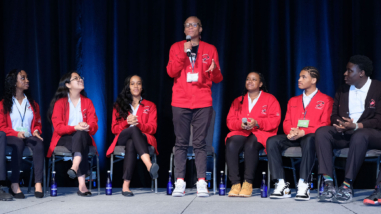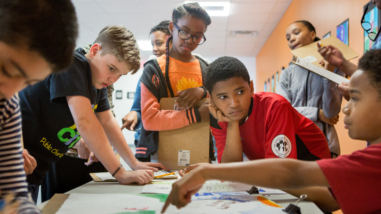The next phase for Open Education

If we want to effectively engage students, we need to make sure that materials are designed to support every learner, that teachers understand how to take advantage of the flexibility of openly licensed resources, and that they are equipped with the knowledge and tools to customize materials for different learners. So, we are not just talking about changing materials, but changing how teaching and learning happen. And schools will need to be prepared to create and sustain conditions that allow teachers, students, and families to fully benefit from OER.
These considerations have been core drivers for our new Open Education strategy. Our goal is to strengthen every student’s learning experiences by the effective use of open educational resources and practices. This goal reflects a systemic approach to implementing OER that incorporates both resources and practices. It includes providing the necessary tools and services to equitably address students’ needs and experiences.
We have some strong ideas about how we want to do this work. We want to play a role in ensuring inclusive growth of the field by engaging educators, scholars, and policymakers from around the world. We are committed to supporting our partners’ work on equity, so that they are equipped to meet the needs of different communities of educators and students. In parallel with our K-12 Teaching and Learning Strategy, we want to deepen partnerships with educators and school communities to identify how OER can best meet their needs. We also will continue to build partnerships with higher education institutions, state systems, and networks to enable effective practices with OER.
In implementing this new strategy, I am particularly interested to learn more about how educators decide which materials to use and how to adapt them to connect with students’ lived experiences and interests. I want to explore collaborations with practitioners and researchers that will help us understand how and under what conditions using OER results in deeper learning. I am looking forward to new partnerships that will support and sustain dedicated OER librarians, instructional design for the creation of inclusive and accessible course materials, and creative educators who are producing and publishing OER.
We are treating this strategy as a living tool, so we will continue to listen to educators and adapt our approach based on what we learn. In the spirit of open practice, we will share as we go. If we are successful, together our work will help to democratize knowledge, empower teachers and learners as creators, and make sure that everyone has the resources and supports that they need to learn.



